Adapting to the Sea
Living in the ocean is difficult and presents any animal with its own unique set of challenges to overcome. How do you move, breath, hear and see, stay warm, eat and deal with salt water?
Its hard to believe that millions of years ago whales lived on land and looked a bit like a cross between a wolf and a deer. As they returned to the water and adapted to life in the oceans they lost their fur, arms turned into fins, they almost completely lost their hind legs, they developed insulating blubber layers and grew tails amongst many other things.
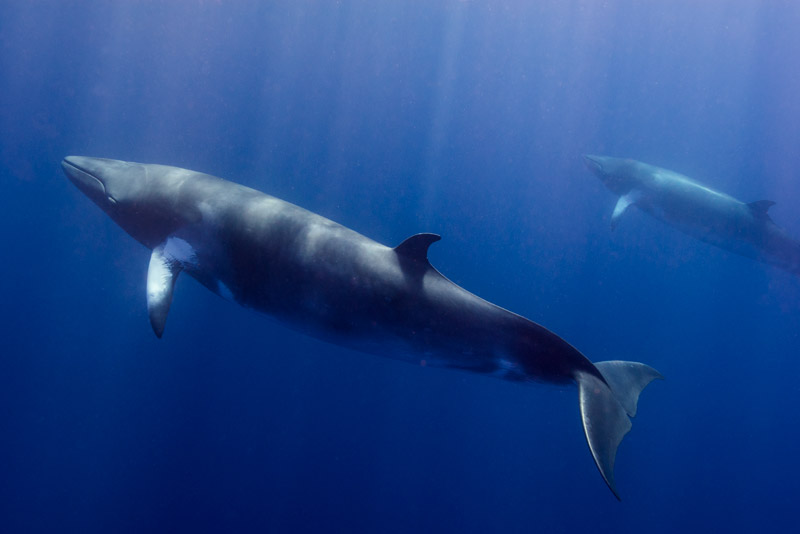
Getting About
Whales are superb swimmers from the amazing acrobatics of dolphins to diving to the ocean depths of the Beaked Whales, they are perfectly adapted to swimming in the ocean.
Whales bodies are beautifully streamlined for extremely efficient movement through the water. Their forelimbs have become modified into flippers for steering whilst their hind limbs have almost disappeared and become internalised.
When we go diving we wear fins to greatly increase our foots surface area, whales have done the same by evolving large tale flukes to aid their propulsion. Just as we kick in an up and down manner when we swim marine mammals swim with a powerful up and down motion of their tails. These tails are powered by the largest muscles on Earth in the whales tales or peduncle
As whale adapted to life permanently in the ocean they lost almost all of their hair. Other marine mammals such as Otters and Seals have retain theirs.
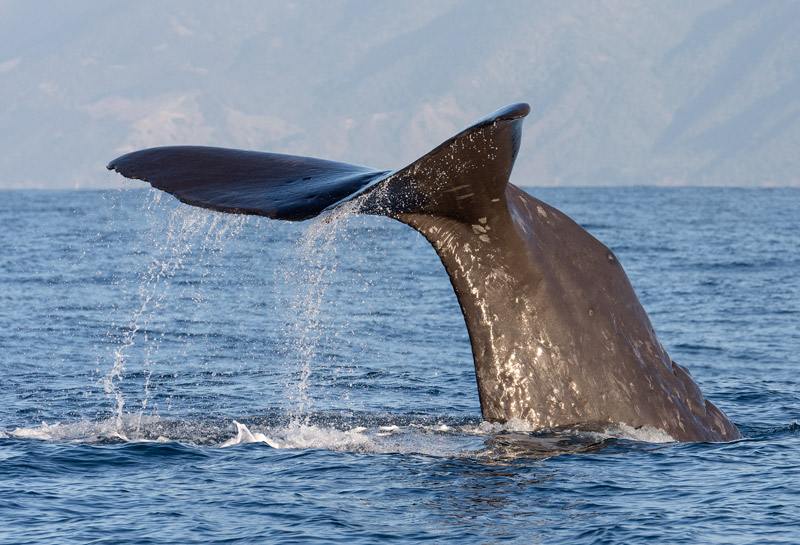
Diving Deep
Animals live much more difficult lives than us so they need really good reasons to do anything. Diving to the ocean depths takes an extraordinary amount of effort and specific adaptations to do so why do they do this? Simple, lots of food.
The vast majority of whale species live and hunt in coastal or shallow waters of the oceans. Only a small number with very special adaptations hunt in the oceans depths, of these the Beaked and Sperm Whales are the champions of deep diving. A Cuvier’s beaked whale was tracked by scientists diving to a depth of 2,992 metres and holding its breath for 138 minutes which simultaneously set new mammalian dive records for depth and time. The deep sea battles between Sperm Whales and Giant Squid are legionary.
Diving deep is a very challenging way to make a living. The crushing pressure, cold and darkness make this an extreme environment to say the least. Whales have evolved an extraordinary physiology to help them dive to such depths and to hold their breath for so long. Known as the ‘mammalian diving response’ it is a set of physiological responses to immersion in water that overrides the bodies basic homeostatic reflexes, reflexes that are automatic, subconscious response to changes within or outside the body such as heart rate, breathing rate, blood pressure, and digestion. Aquatic mammals exhibited a very strong diving response enabling them to slowed their heart rate, redirect blood to their vital organs such as the brain and heart and temporarily shutting down organs such as their kidneys and liver to conserve oxygen and release of red blood cells stored in the spleen enabling them to be underwater for extended periods of time. Whales blood and muscles are also specially adapted to store lots of oxygen, instead of keeping it in their lungs like we humans do. Whales have high levels of haemoglobin and myoglobin in their bodies so they can store lots of oxygen in their blood and muscles. Their muscles and blood are a very dark red, almost black colour because of this.
At 1000 meters depth a whales will experience one hundred times the pressure it does at the surface. Thats enough to completely compress the air in their lungs. To avoid this whales are able to collapse their lungs and rib cages to reduce and air pockets. To further protect their lungs whales exhale 90% of their lung capacity as they dive. This has the added benefit of reducing their buoyancy, making it easier to dive. To extend their down times Beaked whales have streamlined body shapes with indentations, or pockets for their flippers, enabling them to assume a torpedo-like shape which helps them to glide with minimal effort and extend their oxygen stores for as long as possible.
How whales adaptations protect them from ‘the bends’ is not yet completely understood but it is astonishing that they can do this day in and day out over a lifetime.
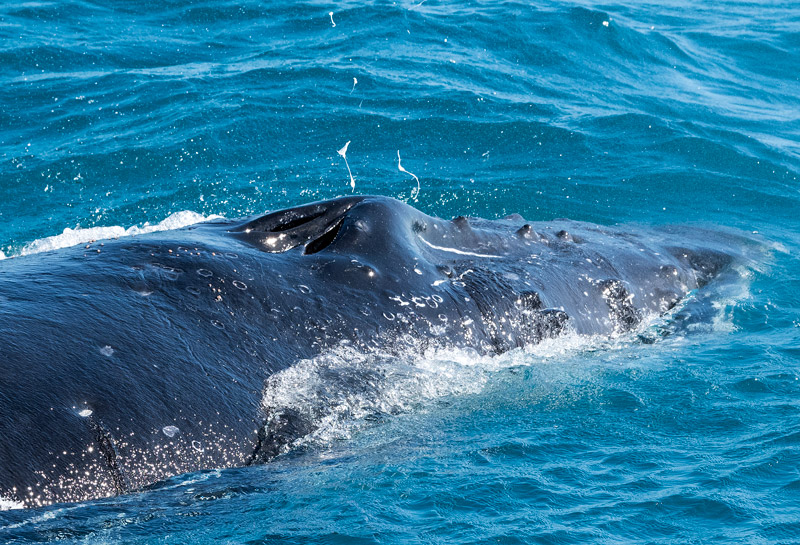
A Breath of Fresh Air
Just like us whales breath air. Millions of years ago the first whales had long snouts (like a fox) with their nostrils on the end of their nose. Good for breathing in air but not so good when your in water. So over millions of years whales nostrils moved back along along their snouts until they are now on top/back of their heads.
The advantage of having your nostrils on the top of your head is that it is one of the first things to reach the surface when you come up to breath. The nostrils or blowholes are covered by a muscular flap(s) that keep water from entering them when the whale is under water. The muscles controlling muscular flap are relaxed when the hole is closed and contract to open when the whale wants to breath. The blowhole leads to the whale’s trachea and then to its lungs.
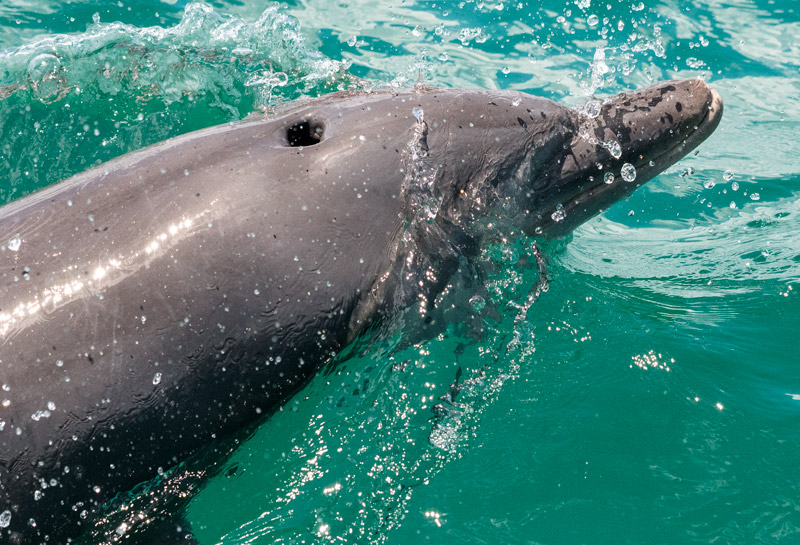
Baleen whales have two blowholes, toothed whales only one.
A whales breath is impressive! The distinctive ‘blow’ when a whale breaths is caused by the whale forcefully expelling most of its lung capacity at phenomenal speeds into the air. The hotter air from their lungs hits the comparably lower-pressure, colder atmosphere causing any water vapour to condense into mist as well as blowing any seawater out of the way.
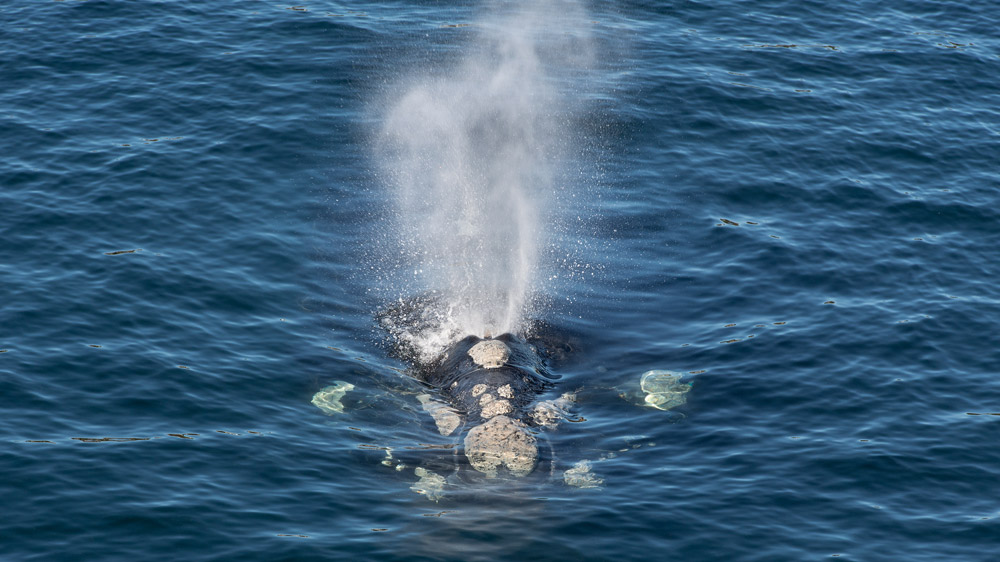
When whale watching the first thing we look for is the size and shape of the whales blow as this gives us the first clues to the whales species. Humpbacks have a ‘bushy’ shaped blow whereas Southern Right’s have a ‘V’ snapped blow. A Blue Whales blow can be ten metres tall. The Sperm Whale is quite unusual as its blowhole is actually its left nostril and it is located at the very front of its head, so its blow is forward and to the left. Its right nostril is involved with its echolocation.
Humpbacks will come to the surface take a breath, make a very shallow dive and come back to the surface for another breath etc. We call this their ‘up’ time. Once they have taken their final breath in the series they will often dramatically arch they backs (hence their name) and dive deep for their ‘down’ time. They will often lift their tails out of the water when diving deep so have your camera ready when you see that back start to arch.
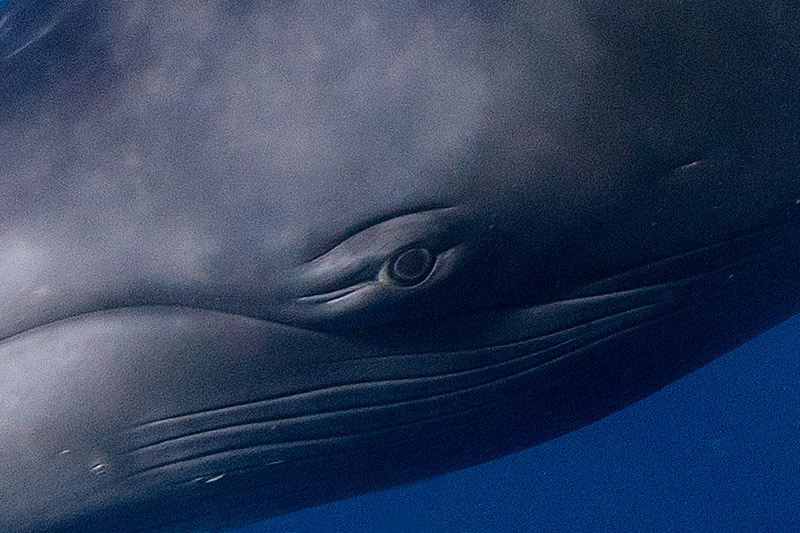
Eye Spy
Vision is probably our most vital sense. Our eyes have evolved to help us perceive our surroundings so we can move safely, gather food and hunt, communicate and create.
Animals bodies and senses have evolved to suit their environments in which they live. On land we can see long distances and the colour and fine details of things is very important. In water your will rarely see more than twenty or thirty metres and colours are reduced by the water. So while whales eyes are in many ways similar to ours they are quite different.
Eyes work by focusing (via the cornea and lens) what it is seeing onto the retina in the back of the eye where photoreceptor cells, called rods and cones, convert light into signals that can be understood by the brain. When seeing in air the light must be refracted (bent) when entering the eye as it is traveling from the less dense air into the denser aqueous medium of the eye. The cornea in human eyes accounts for about two thirds of the focusing power of the eye whilst the last third is done by the eyes lens which lies just behind the cornea, iris, and pupil. Whales on the other hand are seeing underwater where there is no significant difference between the densities of the seawater and the aqueous medium of the eye, so the cornea does not have to significantly bend light entering the eye to focus it onto the retina. This means that whales eyes are shaped very differently than ours, something more like the shape of a car headlight.
Another major difference between the eyes of whales and terrestrial mammals is the neuroanatomy of the retina. There are two types of photoreceptors cells in eyes, rods and cones. Rods are highly sensitive to light, cones are used to see colour and fine details. Humans as well as some other mammals, particularly predators have high concentrations of cones near the centre of the retina (the fovea) that gives us good colour and fine detail vision. The rest of our retina is mainly populated with rod photoreceptors with some cones scattered throughout. It means our eyes work well in daytime but not so well at night.
So whales have something similar to a fovea? Science studies have discovered that whales have two areas in their retina with relatively high concentrations of another type of cell, the retinal ganglion cell. Ganglion cells are the neurons that receive signals directly and indirectly from the photoreceptors cells and send this ‘visual’ information via the optic nerve to the brain. To see fine detail such as we can in the human fovea, very few cones (as few as one) connect to each ganglion cell preserving fine detail. Out on the peripheries of the retina there is a great deal of convergence of rods onto ganglion cells, with up to 1000 or more rods converging onto each ganglion cell. This is why we do not see details well using our peripheral vision. Scientists have found that whales have two areas in the retina with relatively high concentrations of ganglion cells that might represent areas of higher acuity.
What does all this mean? It means that whales have quite poor vision by human standards. They may not be able to see anywhere near the fine details we can. Due to the lack of cone cells in their eyes they would be effectively colour blind. That said their eyes would be better suited to seeing in low light than ours.
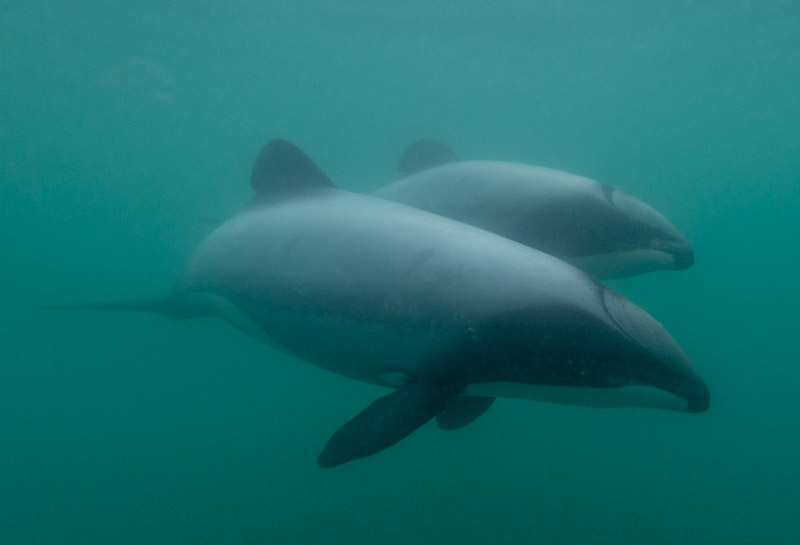
Sound All Around
Living in water presents many problems but also a few advantages. One of these is that sound travels very well through water and over vast distances. As we’ve just learned whales eyesight is not that great but their hearing is fantastic, so they rely heavily on it as a primary sense. It is believed they are able to hear very well at low frequencies but not as well if at all in high frequencies for some species.
Hearing underwater is more difficult than hearing in air because it feels like the sounds hits you all at once, from every direction. Thats because our ears are attached to our skulls and we use the vibrations of our skulls to perceive the tiniest of differences between when the sound hits each of our ears and therefore determine the direction it came from. To overcome this whales ears are no longer attached to their skulls. This is a key adaptation because by not attaching the ear bones to their skulls whales prevents vibrations from the skull being perceived as sounds from the surrounding water.
Baleen whales ears are slightly different to the toothed whales and vastly different from ours. Baleen whales do have an external ear opening on the side of their heads that leads to the auditory canal. To protect the canal from being damaged by water it is blocked by a waxy plug.
Sound is incredibly important to toothed whales as they use echolocation to hunt and understand their surroundings. In addition to the whales ear bones not being attached to their skulls, the ear bones are bound in a light, airy foam. This foam further prevent the sound waves from travelling through the tissues of the animal and may actually isolate the acoustics being picked up, which will aid the whale in ascertaining the direction from which the sound is coming.
Echolocation is the making of sounds that are reflected off objects, the animals receives back these reflected sounds in order to “see” the world around them. The sounds are created in the head of the whale, focused by the melon which sits on the front of the skull and projected forwards. The reflected sounds pass through special sound conducting tissue in the lower jawbone to the inner ear. Echolocation is extremely sensitive with dolphins demonstrating that they can distinguish between objects that are the size of a pea. In some cases such as with River Dolphins who swim in muddy river water they may use echolocation in place of sight.
In addition to hunting and understanding their surroundings, whales use their hearing to communicating with one another as well. Humpback whales are famous for their singing and Blue whales are thought to be able to communicate over vast distances using low frequencies.
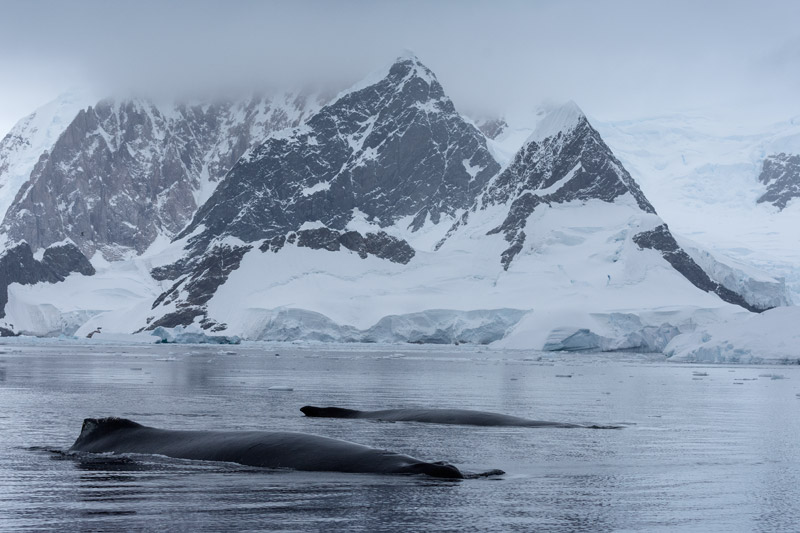
Thermoregulation – Baby its Cold Outside
Whales are warm blooded mammals with a core body temperature about the same as us (about 36.6˚–37.2˚C). Living in the sea poses a particular challenge for marine mammals as their bodies lose heat at a far greater rate than we do living in air. So how do whales keep warm? Well they have several adaptations that allow them to keep warm or cool as they need.
Firstly it helps a lot if your big, like really big. As a general principle to retain heat its best to have a low surface-to-volume ratio. Whales do this in two ways, they are physically big and have a fusiform (spindle-like) body shape with reduced limb size both of which reduces their surface-to-volume ratio. A side benefit of this big body size it that it naturally generates metabolic heat.
Whales are famous for their thick layers of blubber. The blubber layers are composed of fat cells and fibrous connective tissue that creates a very tough and effective insulating layer. It insulates them so well that they can quickly overheat if they become stranded.
Whales maintain and adjust their body temperature by using bloods circulatory system. Its always counter-intuitive but often the problem is staying cool. To regulate their body temperature whales have have arteries in their pectoral fins, flukes and dorsal fin through which they can cool their body. Amazingly these arteries are surrounded by veins so that some heat from the blood traveling through arteries is transferred to venous blood rather than out into the environment. This phenomenon is called countercurrent heat exchange. When whales dive blood circulation decreases at the skin, shunting blood to the insulated their body core.
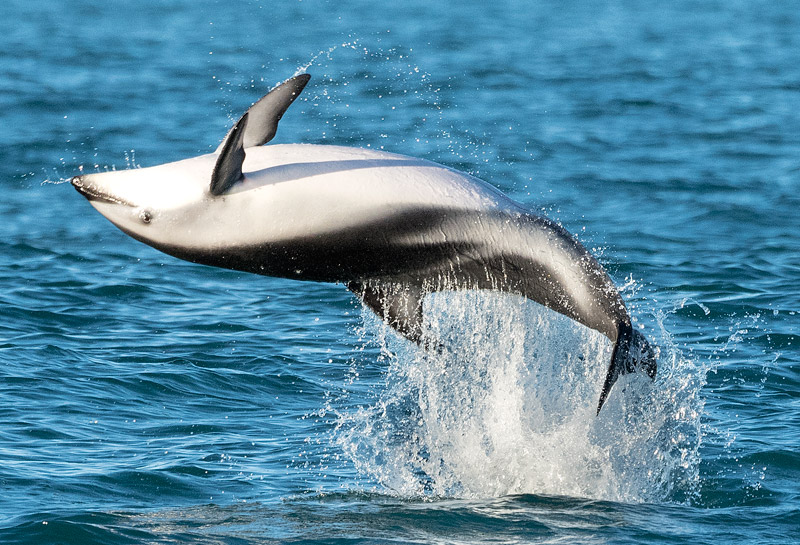
Special Kidneys
Marine mammals have reniculate kidneys, these are multilobed (image a bunch of grapes) that greatly increase their surface area making them far more effective and efficient at removing toxins from the body. Only bears have similar kidneys of terrestrial mammals.
It is still not completely understood how marine mammal maintain the correct balance of water and salt concentrations in their bodies (osmoregulation). Even though marine mammals live in water it is far too salty for them to drink so they must find fresh water another way. It is believed that whales gain most of their fresh water from what they eat and that their bodies are far more effective at retaining that water then land animals.
Copyright 2020 David Jenkins – Whale Spotter
